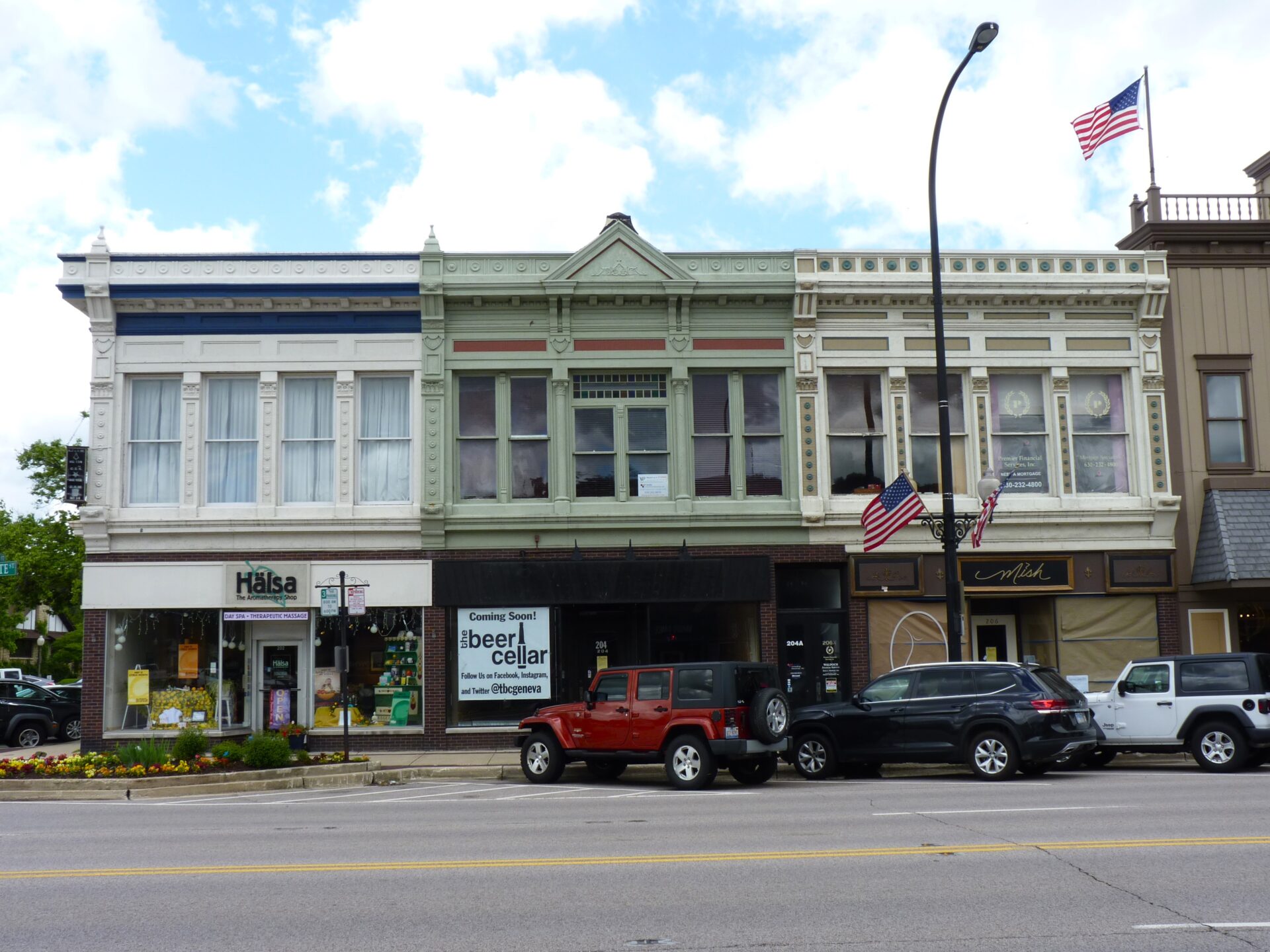(Pictured above: A row of Mesker buildings at 202-212 W. State St. in Geneva. Credit Darius Dryjka)
January 30, 2024
By Kaitlyn McAvoy, Director of Communications
(This article originally appeared in our January 2024 edition of our print newsletter, The Arch. Read The Arch here. )
In communities across Illinois, you can find an increasingly rare but quintessential Main Street building archetype: the “Mesker.”
These buildings feature facades made of galvanized steel and cast iron produced by the Mesker Brothers Iron Works of St. Louis, Missouri, and the George L. Mesker & Company of Evansville, Indiana. Some Mesker facades are more ornamental than others, featuring embossed cornices and window hoods. All were ordered through catalogs and shipped by rail to building owners in the late 1800s and early 1900s.
It is estimated that Illinois once had more than 6,500 buildings with Mesker components. Finding out where these buildings were located and how many still stand today has been a nearly two-decade-long quest led by Darius Bryjka, a Project Reviewer at the Illinois State Historic Preservation Office (SPHO) with the Illinois Department of Natural Resources.
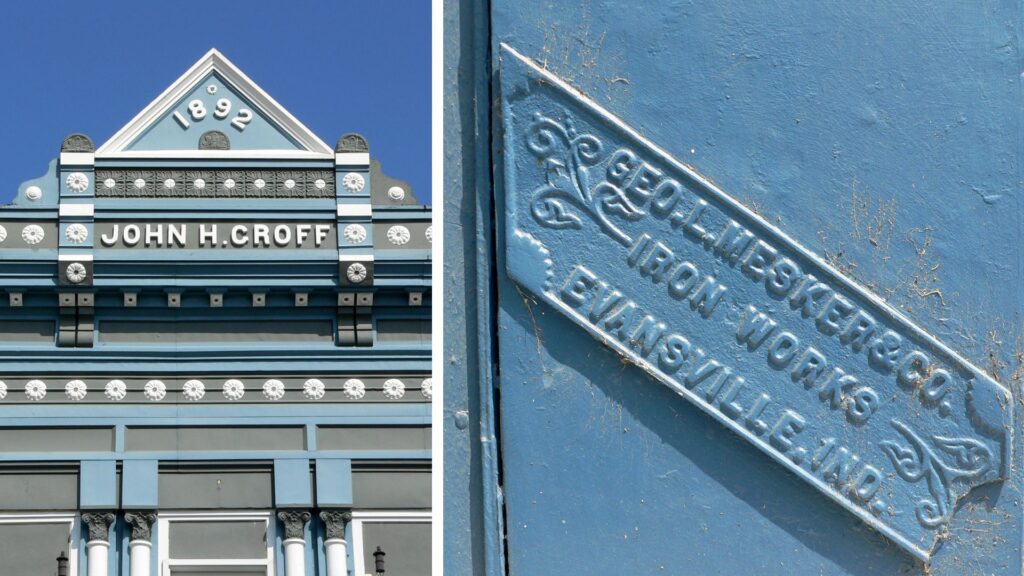
(Left: A nicely painted Mesker Brothers Iron Works facade on the John H. Croff building in Metropolis. Right: A George L. Mesker & Company nameplate marking a cast iron column on a building on First Street in Elizabethtown, Illinois. Credit Darius Bryjka)
‘GOT MESKER?’
In 2005, the SHPO (then called the Illinois Historic Preservation Agency) launched its “got mesker?” campaign, with Bryjka at the helm, to document and research buildings throughout Illinois that featured Mesker parts. Last fall, the project reached a major milestone when the 1,000th Mesker building in Illinois was identified at 404 W. Main Street in Liberty. Even Bryjka was amazed.
“For years I did not believe this was conceivable,” he said. “Having traveled Illinois so extensively, I thought that perhaps we found most of them years ago.”
Bryjka has personally continued the Mesker effort throughout the years, even while leaving state employment briefly from 2009-2013. His work has revealed a treasure trove of data: While the two Mesker companies were not located in Illinois, our state has the most known Mesker buildings in the country. Palestine, Illinois, is the town currently with the most known Meskers, at 17. McLeansboro and Cairo, Illinois, follow with 15. However, all in Cairo have been demolished.
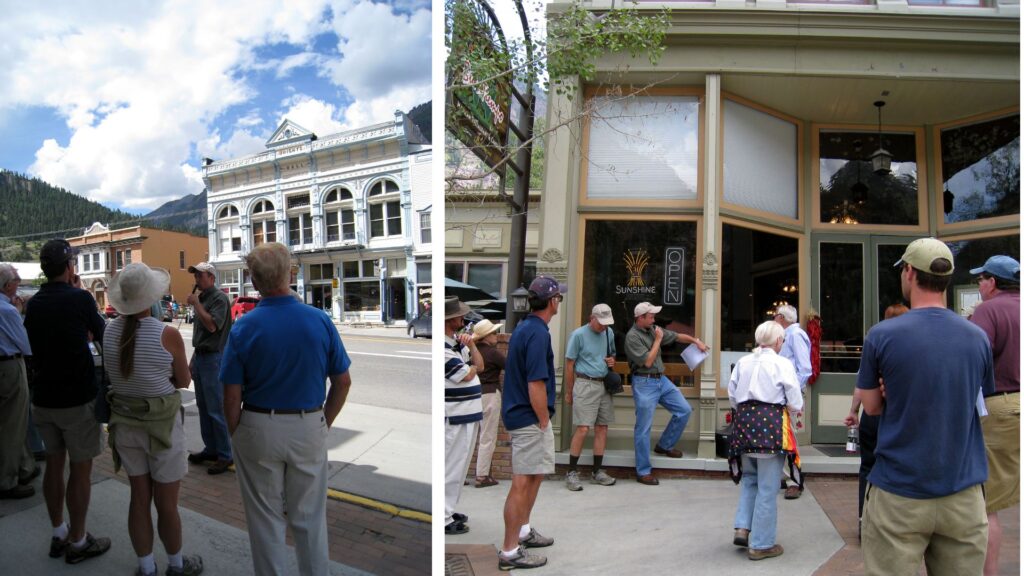
(Bryjka leading tours of Mesker buildings in Colorado, which has 133 known “Meskers.” Credit Darius Bryjka)
NATIONWIDE SIGNIFICANCE
The focus of the initial “got mesker?” project has grown beyond Illinois’s borders, with 5,889* buildings identified across the United States and even some found in Canada and Mexico.
“I continue to be amazed by the fact that we still find them and that this effort resonates with the public and other preservationists around the country,” Bryjka said. “It’s been rewarding to hear from folks who have stumbled upon these treasures in their communities and want to know more.”
“Meskers” are an interesting part of the nation’s history, according to Bryjka, representing the availability and affordability of metal architectural ornamentation in an era otherwise dominated by expensive masonry products. He also pointed out that these buildings go against the “established narrative of significance” that places importance on the singular rarity of a resource.
“Meskers are significant for the opposite reason, precisely because they were so commonplace,” he said.
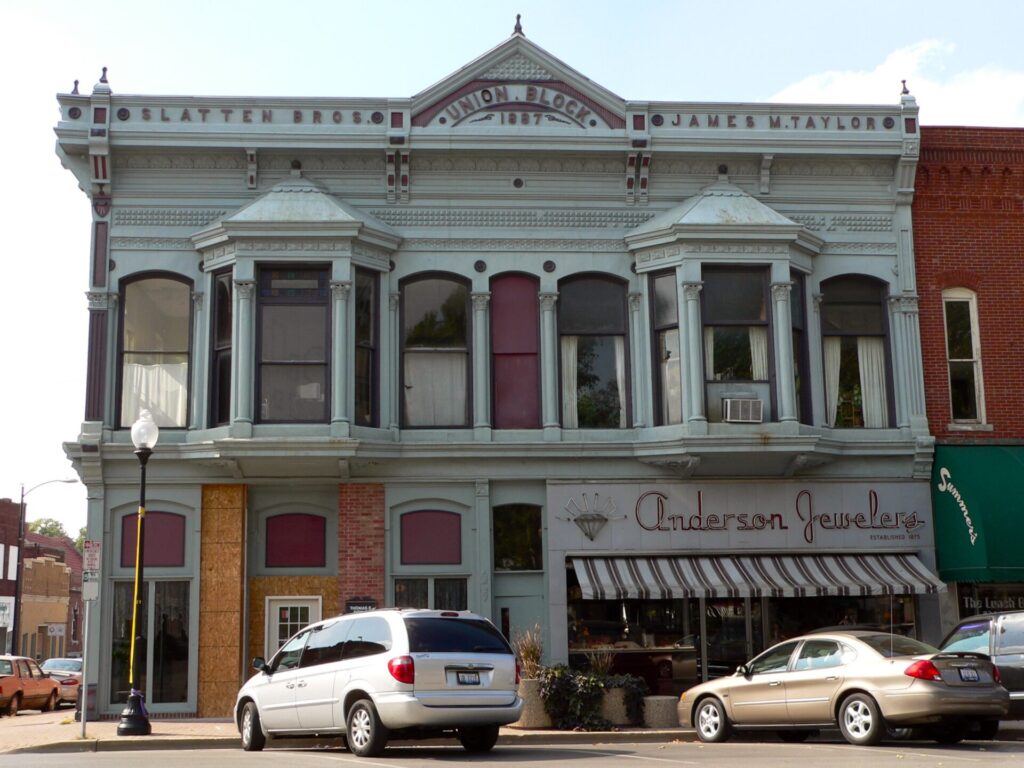
(The Union Block building in Taylorville features steel and cast iron storefront columns and a galvanized sheet-metal upper story by Mesker Brothers Iron Works, St. Louis, Mo. Credit Darius Bryjka)
PRESERVING THE REMAINING MESKERS
While Mesker components adorned many Main Streets in the early- to mid-twentieth century, far fewer can be seen today. More of these buildings are lost each year. At least 214 of the more than the 1,009* identified in 352 Illinois communities through the “got mesker?” project have been demolished. Some towns have lost all of their known Meskers. In addition to Cairo, mentioned above, El Paso, Illinois, has lost all nine of its known Meskers.
Bryjka hopes by calling attention to Mesker buildings over the last nearly 20 years, he is promoting their historic and architectural significance and encouraging towns to preserve the ones they have left.
“Awareness is the first step towards conscious preservation,” he said. “Ultimately, the resource is finite. So, if the database creates awareness and leads to any being saved, that’s the goal.”
*numbers as of December 3, 2023
LEARN MORE:
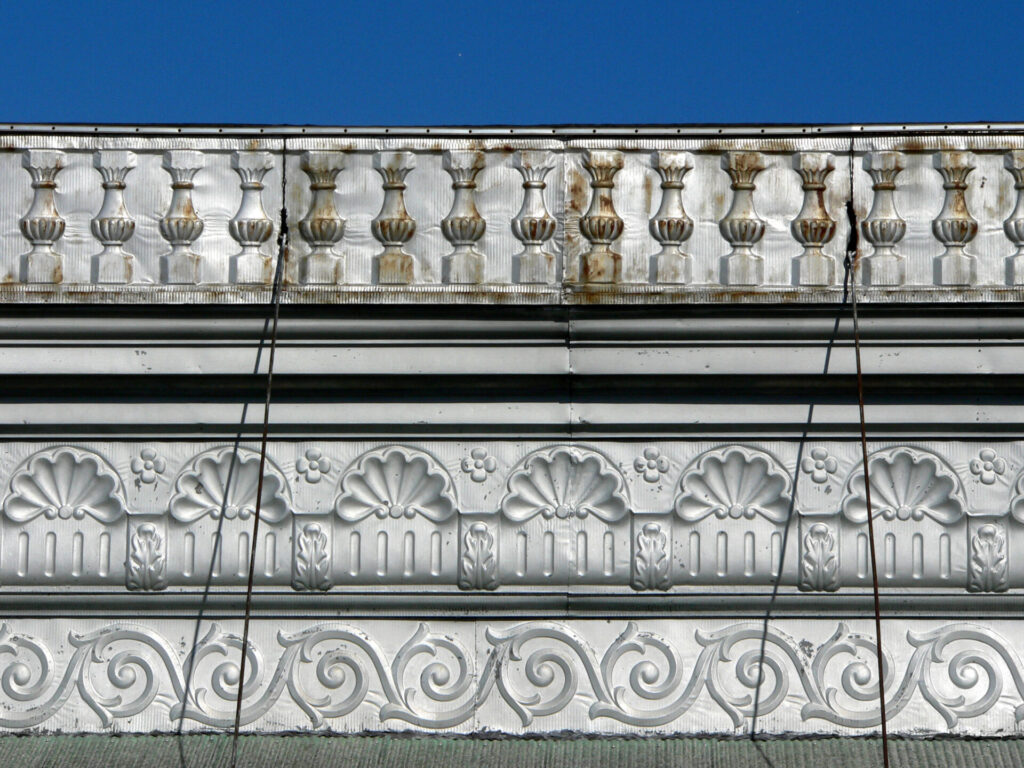
(A row of three storefronts in Chesterfield features this Mesker cornice design. Credit Darius Bryjka)
Stay up to date
Bryjka personally maintains a blog, “Mesker Brothers: Storefronts of America,” with updated information at MeskerBrothers.com. He also updates the state’s growing database of Meskers at the Illinois Department of Natural Resources website dnrhistoric.illinois.gov/preserve/gotmesker.html.
Explore photos
Bryjka’s Flickr page, which can also be found at the DNR link above, features photos of Mesker buildings across the country.
Engage
Follow the “Mesker Brothers” Facebook group.
How to identify a Mesker
Think you have a Mesker in your community? Look for a nameplate at the bottom of a storefront column. Meskers also have a set of unique motifs, which can be used to distinguish them from other architectural ironworks. Use the helpful identification guide at the DNR’s website listed above. When in doubt, contact Bryjka at his MeskerBrothers.com website.

